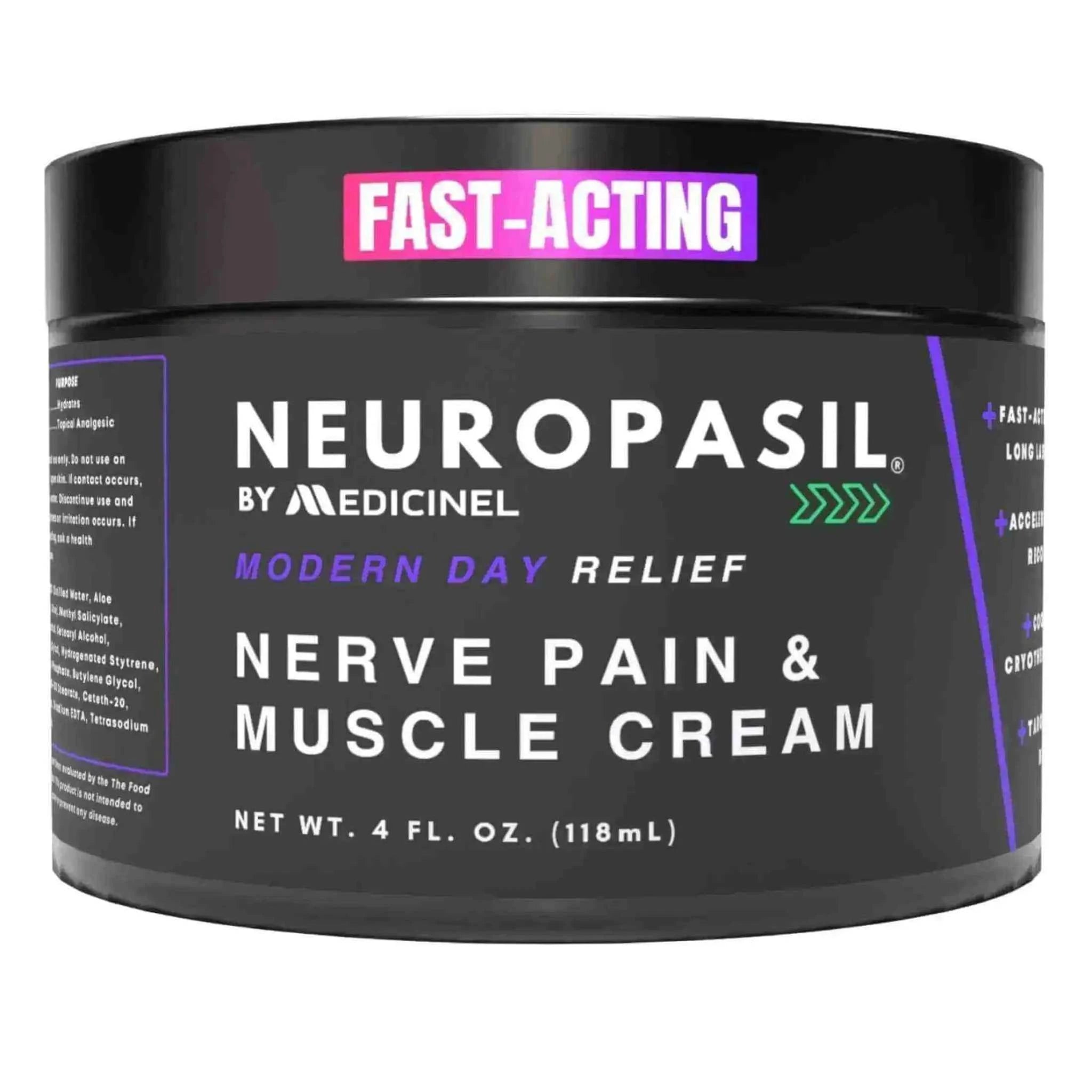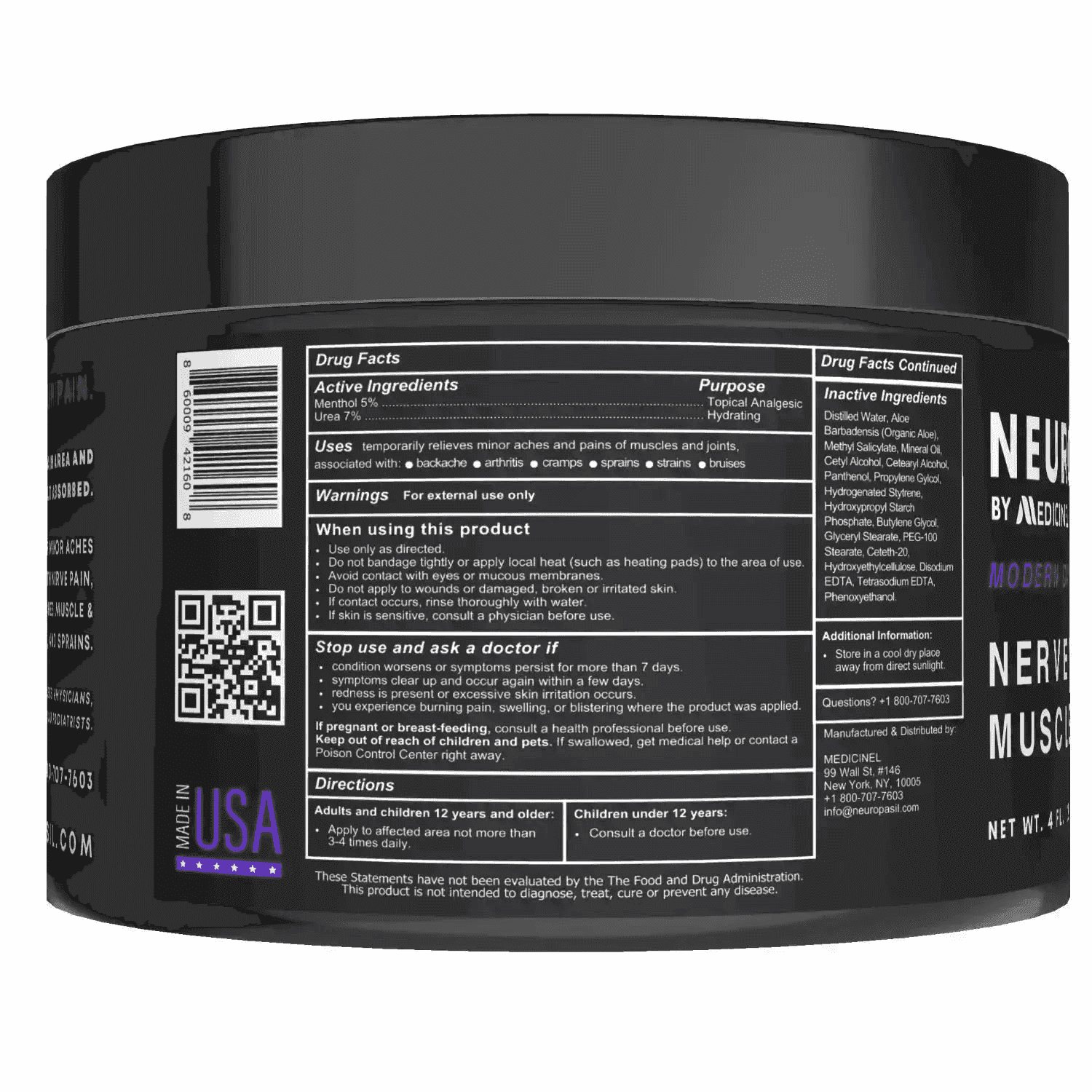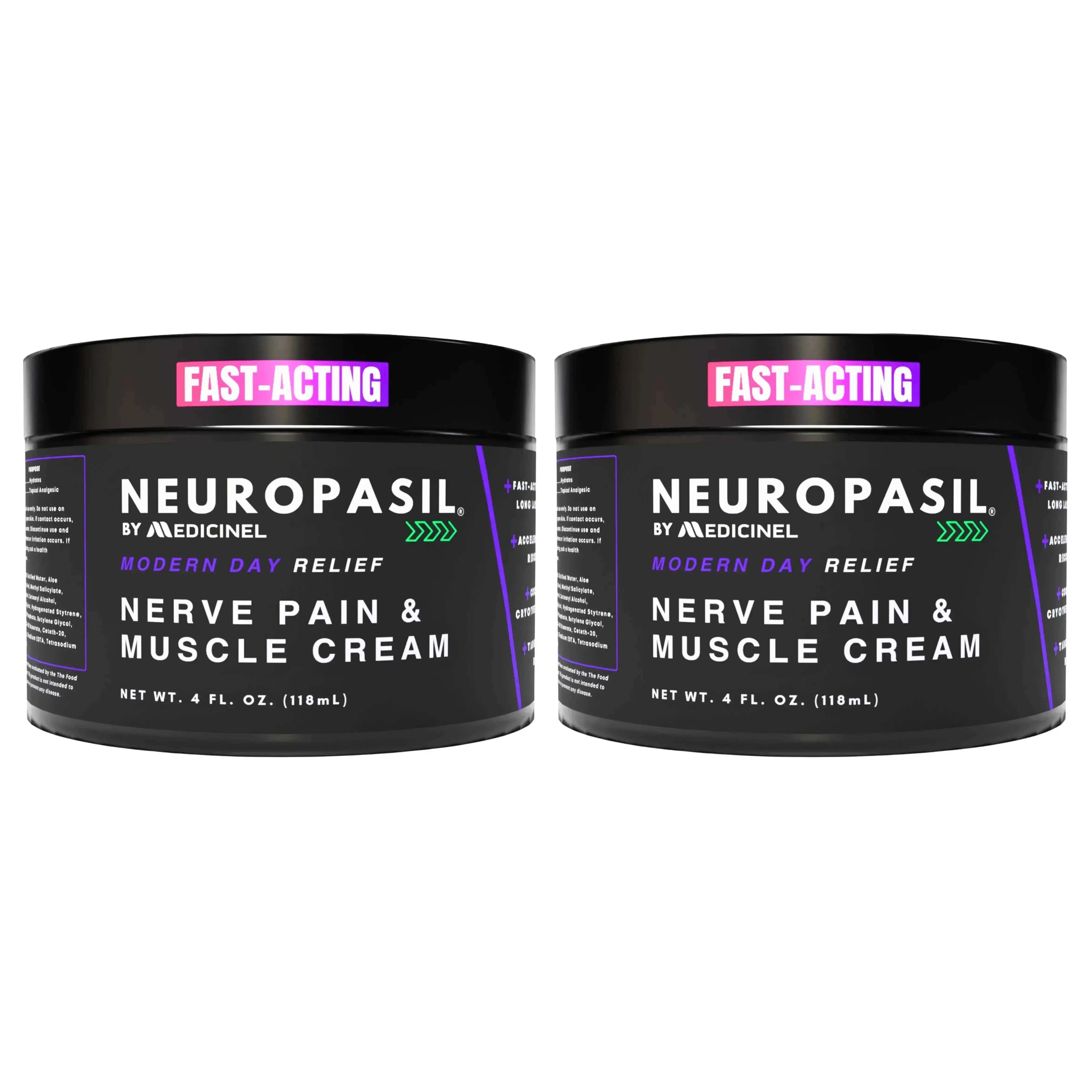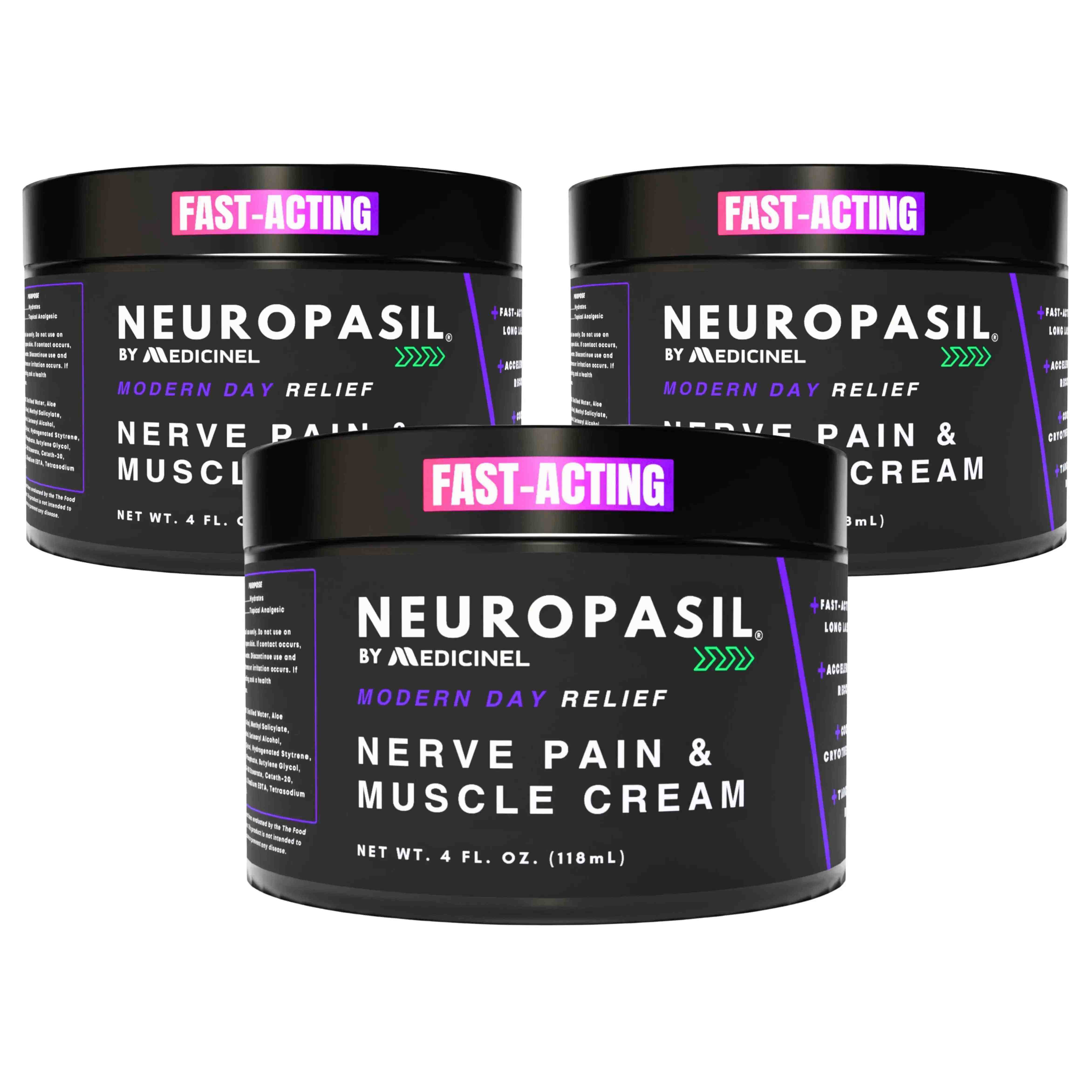Why Lower Back Pain Affects Nearly Everyone
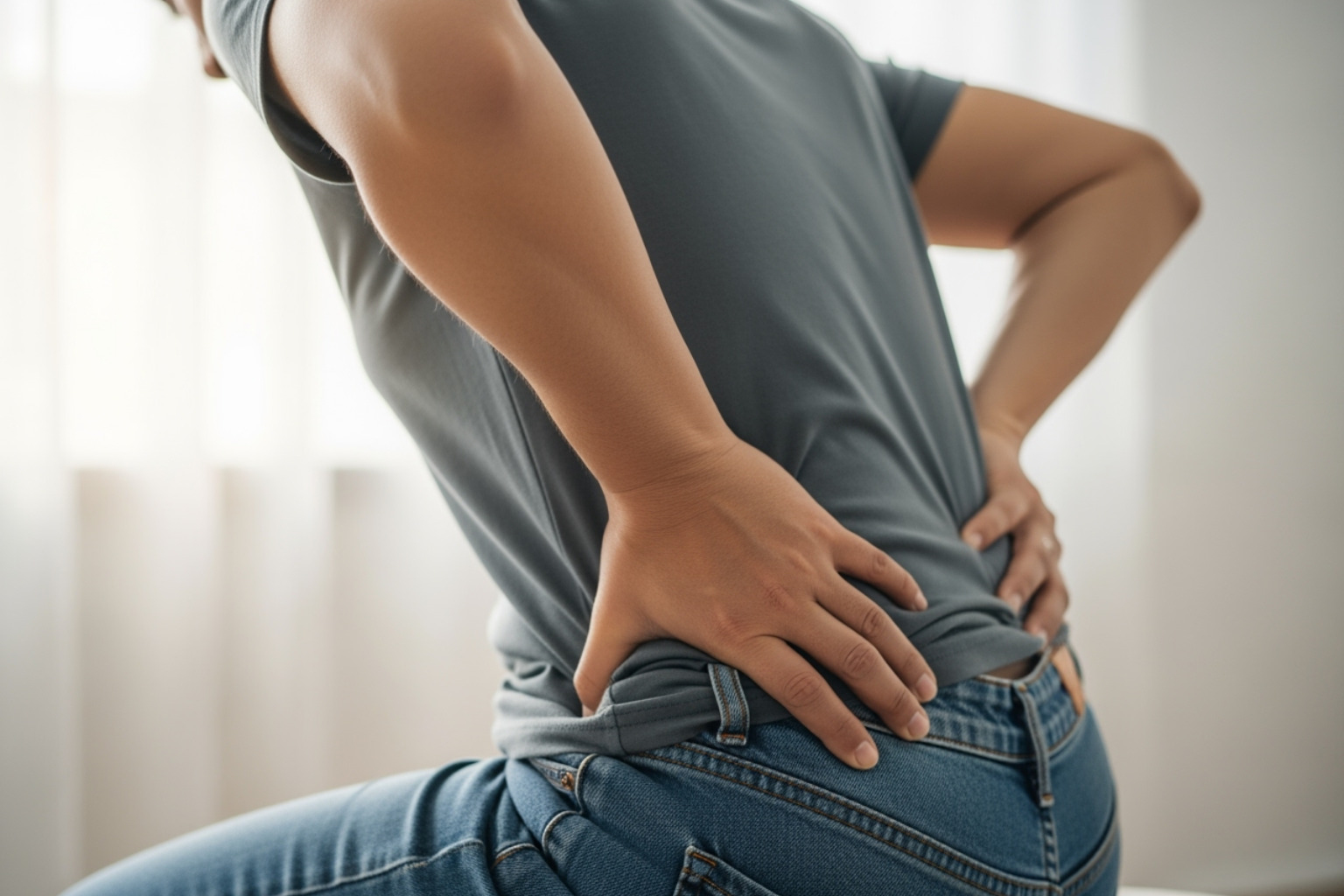
Lower back pain causes range from simple muscle strains to complex spinal conditions, making it one of the most common health complaints worldwide. Nearly everyone experiences it at some point. According to the National Institute of Neurological Disorders and Stroke, roughly 80% of all people will experience lower back pain during their lifetime.
The most common lower back pain causes include:
- Muscle or ligament strains - from improper lifting or sudden movements
- Herniated or bulging discs - when spinal discs slip out of place
- Degenerative disc disease - age-related wear and tear
- Spinal stenosis - narrowing of the spinal canal
- Arthritis - joint inflammation and deterioration
- Poor posture - especially from prolonged sitting
- Sciatica - nerve compression causing radiating pain
Your lower back, or lumbar spine, supports the weight of your upper body while allowing for movement, making it vulnerable to injury. Back pain can be acute (lasting a few days to weeks) or chronic (persisting beyond 12 weeks). Most acute pain resolves on its own, but understanding the cause is key to treatment and prevention.
As one expert notes: "Most people have at least one backache in their life" - and for good reason. The lower back experiences constant mechanical stress, making it a prime target for pain.
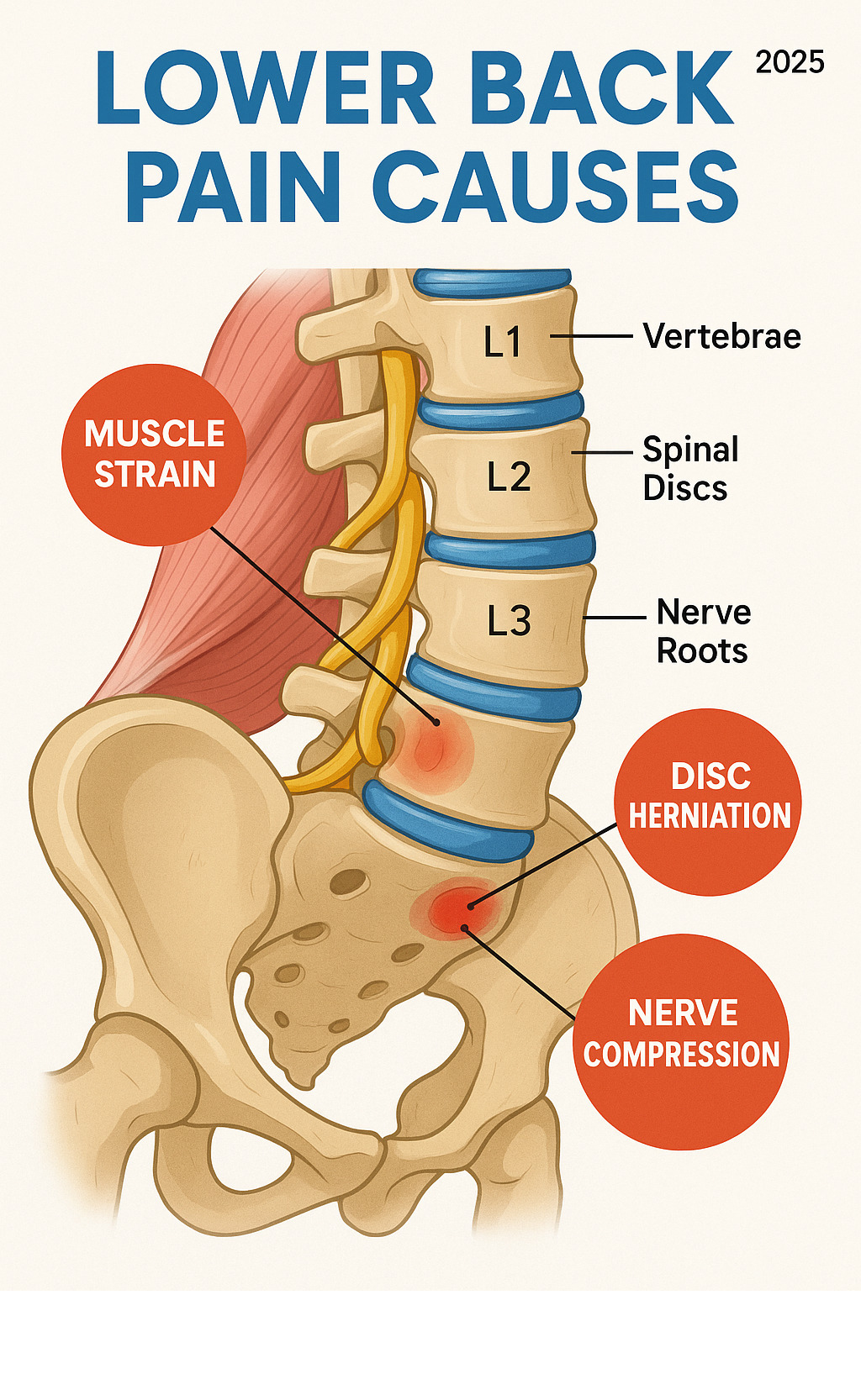
What Are the Main Lower Back Pain Causes?
Our lumbar spine handles incredible mechanical stress to support our upper body and allow us to bend and twist. This hard work also makes it vulnerable to injury. Whether it's a sudden, sharp twinge or a persistent, dull ache, most lower back pain causes are either mechanical issues or stem from an underlying medical condition.
Common mechanical lower back pain causes
These are the most frequent culprits and usually relate to how we move our bodies.
A muscle or ligament strain is a top cause, often resulting from overstretching or tearing the tissues that support the spine. This can happen from sudden awkward movements, using improper lifting techniques, or overexertion. These injuries usually respond well to rest, over-the-counter pain relief, and alternating ice and heat. For more tips, see our guide on relieving muscle aches.
Overuse injuries are also common, developing from repetitive movements like frequent bending or holding awkward postures for long periods. Sudden, involuntary muscle spasms can also be incredibly painful and are often the body's protective response to an underlying strain.
Chronic lower back pain causes from underlying conditions
Chronic pain (lasting over 12 weeks) often points to more complex, long-term conditions affecting the spine's structure.
As we age, our spinal discs show signs of wear in a process called degenerative disc changes. The discs can shrink and offer less cushioning, sometimes leading to pain as bones rub or nerves get irritated.
A herniated or bulging disc occurs when the soft center of a spinal disc pushes through its tougher outer layer. This can press on nearby nerves, causing pain, numbness, or weakness that may radiate down the legs. Males between 20 and 50 are at a higher risk for this injury.
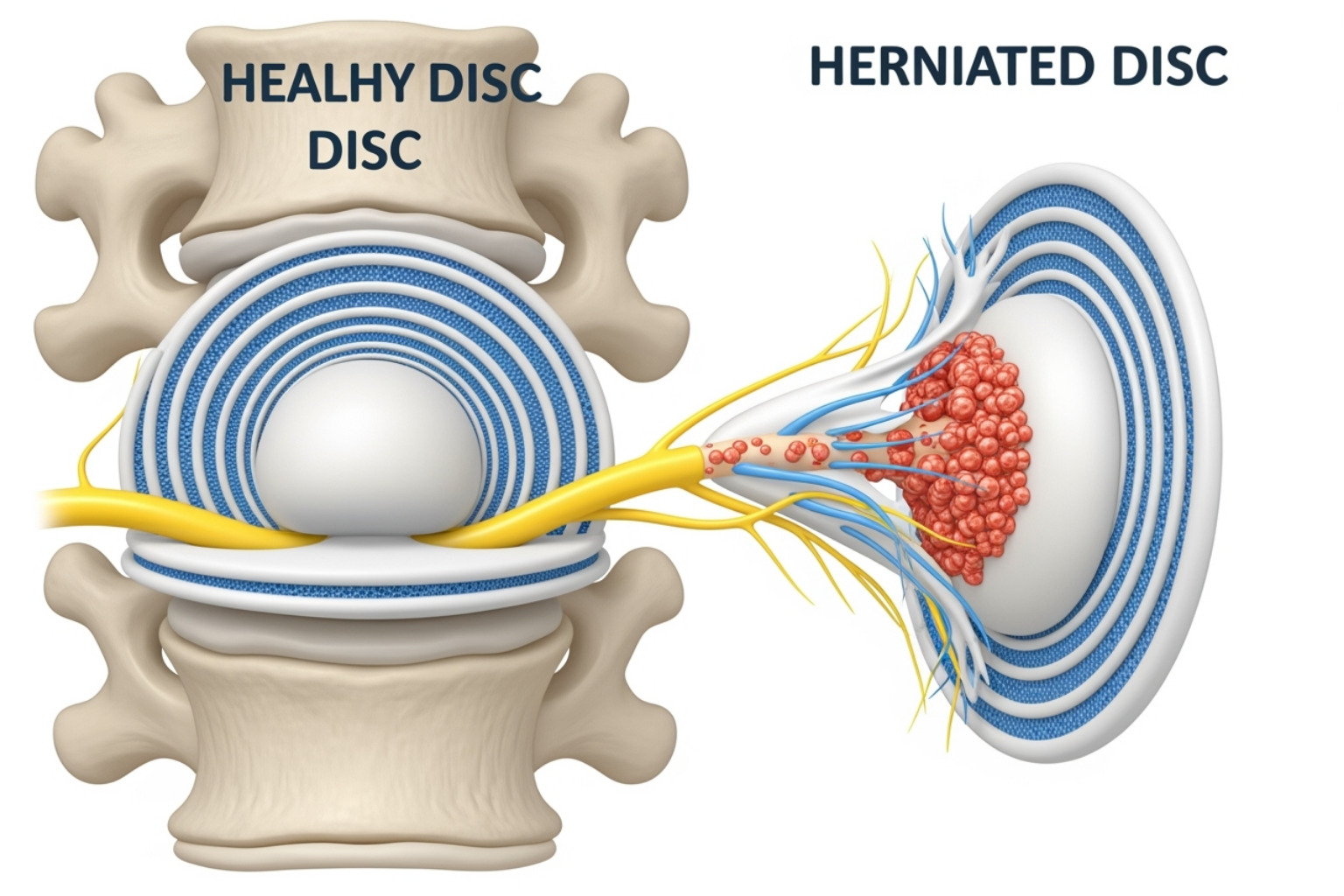
Joint changes, often related to arthritis, are another factor. Osteoarthritis is the "wear and tear" type affecting the spine's facet joints. Less commonly, inflammatory conditions like Ankylosing Spondylitis or Rheumatoid Arthritis can impact the spine. Our guide on managing arthritis pain offers helpful insights.
Other conditions include:
- Spinal stenosis: A narrowing of the spinal canal that can pressure the spinal cord and nerves.
- Spondylolisthesis: When one vertebra slips forward over the one below it, common in young athletes due to repetitive stress.
- Scoliosis: An abnormal sideways curve of the spine that can cause uneven pressure and pain.
- Bone health issues: Conditions like osteoporosis weaken bones, increasing the risk of spinal compression fractures. In rare cases, infections or tumors can also be lower back pain causes.
How Do Lifestyle and Other Factors Increase My Risk?
Many everyday choices and personal characteristics can increase your chances of experiencing lower back pain causes. Understanding these risk factors is a huge step towards keeping your back healthy.
Common risk factors include:
- Age: Natural wear and tear on spinal discs and joints often begins in our 30s or 40s, making our backs more vulnerable over time.
- Lack of exercise: Weak core muscles in the abdomen and back provide less support for the spine, making it more prone to strain and injury.
- Excess weight and obesity: Carrying extra pounds, especially around the midsection, adds significant stress to the spine and its supporting structures.
- Smoking: This is a major risk factor. Smoking reduces blood flow to the spinal discs, hindering their ability to heal. It also increases osteoporosis risk and can cause a chronic cough that strains the back.
- Psychological conditions: Depression, anxiety, and stress can cause muscle tension and alter pain perception, contributing to chronic back issues.
- Occupational hazards: A desk job with prolonged sitting and poor posture strains the lower back. Conversely, jobs involving frequent or improper heavy lifting significantly increase injury risk.
Preventing back pain through lifestyle adjustments
The good news is that many risk factors are modifiable. By making conscious lifestyle choices, you can dramatically reduce your risk.
- Strengthen your core: Regular exercises like planks and Pilates build abdominal and back muscles, creating a natural corset of support for your spine.
- Maintain a healthy weight: Losing excess pounds, particularly around your abdomen, takes a significant load off your lower back.
- Use proper lifting techniques: Always bend at your knees and hips, keep the object close to your body, and lift with your powerful leg muscles, not your back. Avoid twisting while lifting.
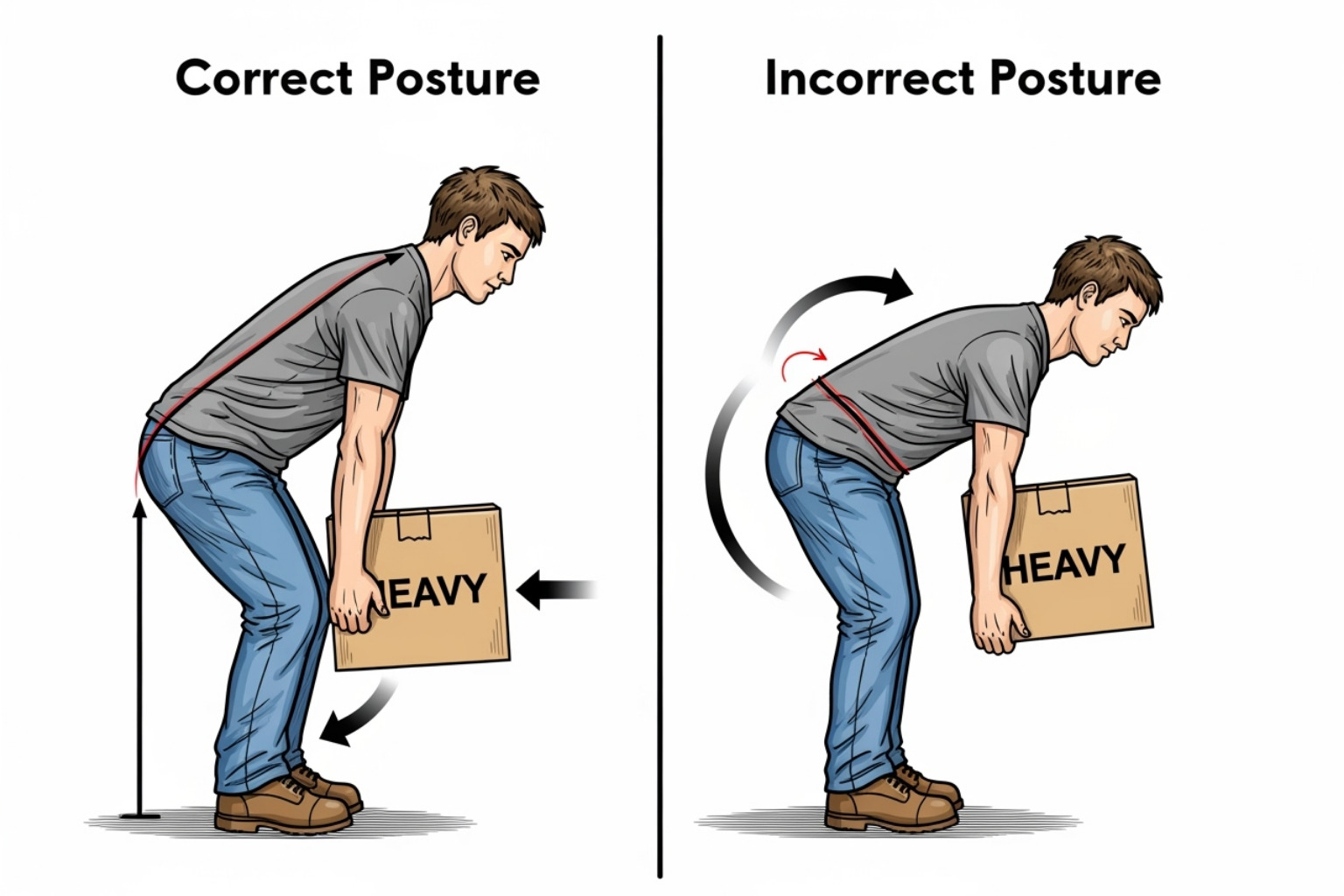
- Practice good ergonomics: Pay attention to your posture. Use a supportive chair, adjust your workstation, and use pillows to support spinal alignment while sleeping.
- Quit smoking: This is one of the most impactful changes for your back and overall health.
- Manage stress: Techniques like yoga, meditation, and deep breathing can reduce muscle tension and help you manage how you perceive pain.
How Are Sciatica and Pinched Nerves Related to Back Pain?
When lower back pain causes involve a sharp jolt, numbness, or tingling that travels down your leg, you may be dealing with nerve compression. This is your body signaling that a nerve is being irritated or squished.
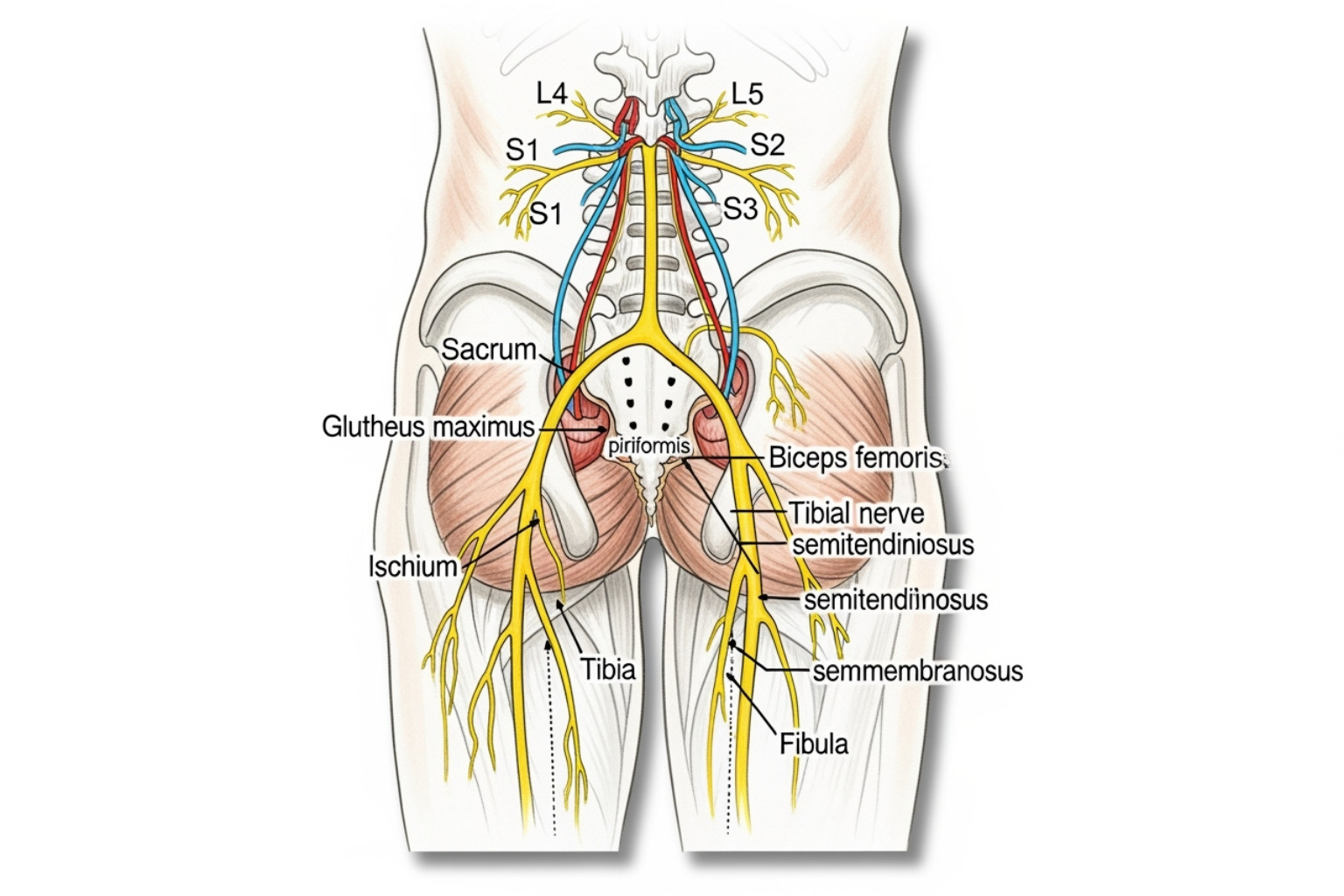
Understanding sciatica
Sciatica is not a condition itself, but a symptom of an underlying problem irritating your sciatic nerve. This is the longest and thickest nerve in the body, running from your lower back, through your buttocks, and down the back of each leg.
When this nerve is bothered, you experience sciatic nerve irritation. The most common cause is a herniated or bulging disc pressing on the nerve roots. Other causes include bone spurs, spinal stenosis (narrowing of the spinal canal), or piriformis syndrome (a buttock muscle squeezing the nerve).
The hallmark of sciatica is symptoms down the leg. The pain typically starts in the lower back or buttock and travels down one leg, feeling like a dull ache, sharp burning, or an electric shock. It may be accompanied by numbness, tingling, or weakness. Fortunately, studies suggest that for 80-90% of people, sciatica resolves without surgery. For more details, see What to know about sciatica.
Understanding a pinched nerve
A "pinched nerve" is a broader term for when any nerve root in your lower back is compressed by surrounding tissues, disrupting the nerve signal.
This nerve root irritation can stem from several common lower back pain causes. Herniated discs are frequent offenders, but so are bone spurs, spinal stenosis, or spondylolisthesis (a slipped vertebra). In rare cases, tumors or infections can cause nerve compression.
The symptoms of a pinched nerve are similar to sciatica: pain spreading from the lower back to the buttock, leg, or foot, along with potential numbness, tingling, or weakness. These symptoms often improve on their own within about six weeks. However, if they persist or worsen, it’s time to seek medical attention.
Treatment may include rest, physical therapy, medication, or injections. For natural ways to support nerve health, learn about our natural solutions for nerve pain.
What Are My Options for Diagnosis and Relief?
When lower back pain causes disrupt your life, it's important to know your options, which range from home remedies to professional medical care. Most back pain responds well to conservative treatment.
A healthcare provider will typically start with a medical history and a physical exam, checking your movement, reflexes, and muscle strength. This is often enough to guide treatment.
For persistent pain or if there are warning signs, your doctor might recommend imaging tests. X-rays can show bone and alignment issues. MRI scans provide detailed images of soft tissues like discs and nerves, making them ideal for spotting herniated discs or spinal stenosis. CT scans offer another view of bone problems, while an EMG can check nerve and muscle function.

At-home and non-invasive approaches
This is often the most effective starting point for common lower back pain causes.
- Rest and activity modification: Avoid activities that spike your pain for a day or two, but don't stop moving entirely. Gentle activity is better than complete bed rest.
- Ice and heat therapy: Use ice packs for the first few days to reduce inflammation and numb sharp pain. After that, switch to heat from a warm bath or heating pad to relax tight muscles.
- Gentle stretching and flexibility exercises: Once the initial sharp pain subsides, light activities like walking, swimming, or cycling can strengthen supporting muscles and improve flexibility. Listen to your body and avoid sharp pain.
- Relaxation techniques: Stress causes muscles to tighten, creating a pain-tension cycle. Deep breathing, meditation, and other relaxation methods can help break this cycle.
- Supportive care: Pay attention to your posture. Use ergonomic supports at your desk and pillows to maintain proper spine alignment while sleeping.
For more practical strategies, check out these Tips for managing back pain at home.
When to consider advanced care
If home care isn't enough, or if pain persists for several weeks, it's time to explore other options with a healthcare provider.
- Physical therapy: A physical therapist can create a personalized program to strengthen your core, improve flexibility, and teach you proper body mechanics.
- Stronger medications: Your doctor may prescribe anti-inflammatory drugs, muscle relaxants, or targeted injections like epidural steroid shots to reduce inflammation.
- Manual therapies: Osteopathic manipulation or chiropractic care can help improve spinal alignment and reduce muscle tension.
- Surgery: This is rarely necessary and is typically reserved for severe cases with clear evidence of nerve compression causing progressive weakness or loss of bowel/bladder control that hasn't responded to other treatments.
When Should I Worry and See a Doctor?
Most lower back pain causes, like muscle strains, improve with self-care. However, sometimes back pain signals a more serious issue. Knowing when to wait it out and when to call a doctor is key.
You should see a doctor if your pain:
- Lasts more than 3-4 weeks without improving.
- Is severe and not relieved by over-the-counter medications or rest.
- Steadily worsens over time.
- Significantly interferes with your daily life, such as sleeping, working, or basic activities.
Red flag symptoms requiring immediate attention
Certain symptoms are urgent warning signs that require immediate medical attention (e.g., an emergency room visit). These "red flags" can indicate serious conditions that could cause permanent damage if not treated quickly.
Seek immediate help for back pain accompanied by any of the following:
- Loss of bowel or bladder control: This could signal cauda equina syndrome, a rare but serious condition requiring emergency surgery.
- Numbness in the groin area: Also known as "saddle anesthesia," this is another sign of cauda equina syndrome.
- Leg weakness or foot drop: Sudden, significant weakness in one or both legs or an inability to lift the front of your foot can indicate serious nerve compression.
- Fever: Back pain combined with a fever (without another obvious cause like a cold) could point to a spinal infection.
- Unexplained weight loss: Losing weight without trying, in addition to back pain, warrants immediate evaluation.
- Pain after a severe fall or injury: If your pain started after a trauma like a car accident or significant fall, you could have a fracture.
Trust your instincts. If you are worried about your back pain, it's always safest to get it checked out by a professional.
Frequently Asked Questions about Lower Back Pain
When you're dealing with back pain, questions are natural. Here are answers to some of the most common concerns about lower back pain causes.
How long does acute lower back pain usually last?
Most acute lower back pain causes, like muscle strains, resolve relatively quickly. Many people feel better within a few days to a couple of weeks, with the vast majority of cases resolving within 4 to 6 weeks.
During this time, self-care measures like ice, heat, and over-the-counter pain relievers are effective. A gradual return to activity is also encouraged, as prolonged bed rest can lead to stiffness and muscle weakness. If your pain hasn't significantly improved after 3 to 4 weeks, or if it's getting worse, check in with a healthcare provider.
Can stress cause lower back pain?
Yes, the mind-body connection is powerful, and stress can be a direct cause of lower back pain. When you're stressed, your body's "fight or flight" response can lead to chronic muscle tension, especially in the back and shoulders. This constant tension can cause stiffness, spasms, and pain.
Stress can also trigger increased inflammation and lead to altered breathing patterns that strain back muscles. Fortunately, stress management techniques like meditation, deep breathing, yoga, and getting adequate sleep can be very effective in reducing this type of back pain.
Is walking good for lower back pain?
For many types of lower back pain causes, walking is beneficial, but it depends on the specific cause. Gentle walking increases blood flow to the spine, which promotes healing and reduces stiffness. It's a great low-impact way to keep muscles and joints from locking up.
However, it's important to know when to avoid walking. If it makes your pain sharper, causes shooting pains down your leg, or generally makes you feel worse, you should stop. This can happen with conditions like severe spinal stenosis. Consulting a doctor or physical therapist is the best way to get personalized advice on whether walking is right for your specific condition.
Conclusion
Understanding lower back pain causes is the first step toward finding relief. We've covered common issues from simple muscle strains to more complex conditions like herniated discs and nerve compression.
The good news is that you are not powerless. Most acute pain is due to mechanical stress from daily activities, and many chronic pain risk factors—like excess weight, lack of exercise, smoking, and chronic stress—are within your control. By making thoughtful lifestyle adjustments, you can significantly reduce your risk.
When pain strikes, most acute lower back pain resolves within a few weeks with self-care like ice, heat, and gentle movement. For nerve-related pain like sciatica, targeted approaches can provide the specific relief you need.
Knowing when to seek professional help is also crucial. Pay attention to the red flag symptoms we discussed, as they require immediate medical attention. For most people, however, the path to relief begins with understanding the pain and taking proactive steps.
At Neuropasil, we understand that nerve pain and muscle discomfort can significantly impact your quality of life. Our specialized relief creams are designed to provide targeted comfort exactly where you need it most. Learn more about nerve pain relief options and find how our products can be part of your comprehensive approach to managing discomfort.
Every person's experience with lower back pain causes is unique. With the right knowledge, care, and relief options, there is genuine hope for a more comfortable, active future.










